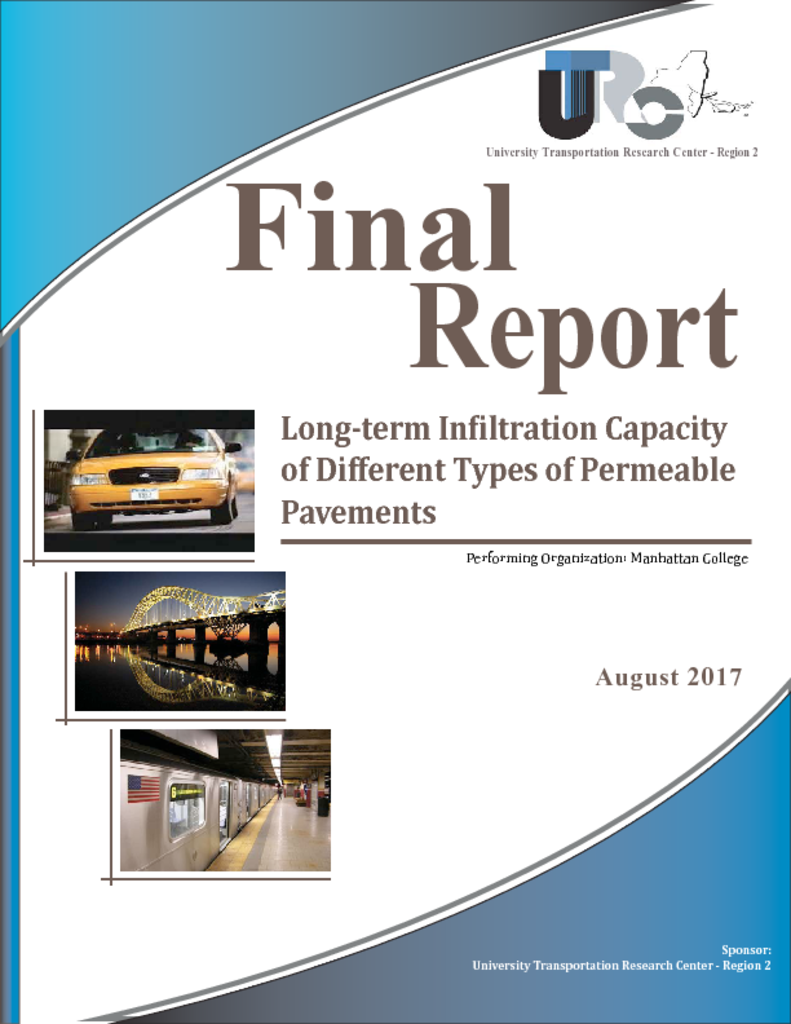Permeable pavements such as porous asphalt, pervious concrete and permeable interlocking concrete pavers are relatively novel alternatives to conventional pavement that allow rain and snowmelt to infiltrate, thereby reducing runoff, flooding and nonpoint source pollution. A barrier to wider adoption of these runoff-reducing alternative pavements is uncertainty over their long-term performance. Infiltration capacity (IC) can decrease over time if pores in permeable pavement become clogged with particles. Indeed, several studies have found rapid reduction in infiltration from clogging [2-4], but other studied sites have maintained high IC for multiple years [2, 5-8]. The purpose of this project was to measure IC on three different types of permeable pavement: porous asphalt (PA), pervious concrete (PC) and permeable interlocking concrete pavers (PICP). Combined with previous results [1], the results from this project provide further understanding of how IC changes over time in different types of permeable pavements.




